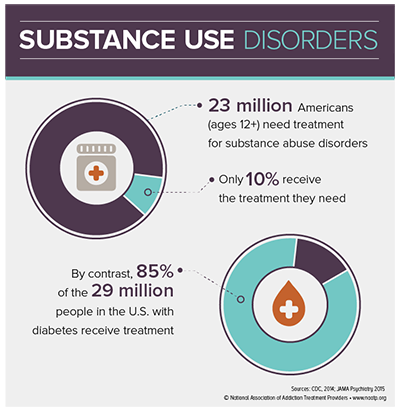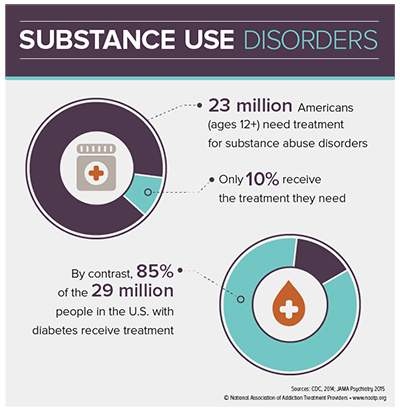According to the 2019 National Survey on Drug Use and Health, an estimated 20.4 million people aged 12 or older in the United States had a substance use disorder in 2019. Of those, 14.6 million people had an alcohol use disorder and 8.2 million. The number of people currently taking illegal drugs is 33.709 million. Unavailable Information.

Statistics on Drug Addiction
How does drug abuse affect people and their families? We provide treatment at a discounted price for patients. Check for coverage at a drug rehab facility. Please enter an insurance membership identification to facilitate verification. All fields must be filled. Policy membership number WXY1030Z0. Next, make sure your coverage has insurance coverage at an addiction center.
The National Center for Drug Abuse Statistics has deemed the situation “a public health emergency.” All groups ages 15 and older experienced a rise in these grim statistics, intensified by the use of fentanyl. Currently, substance use disorder affects more than 20 million Americans ages 12 and over.
Alcohol Use Disorder (AUD) in the United States
Images 12 years. Across the nation about 15 million (aprox 15 million) adults aged 12 to over have AUD.. This number includes 10.9 million men (7.8% of men in this age group8) and 5.25 million women (7.9% of females in this age group8). NSDUH estimates 44,000 teens aged 14 to 17: This total includes 165,000 males (7.9 per cent) and 251,000 women (7.9 per cent).
These studies also provide information on the prevalence rates of substance abuse and dependence as defined by the Diagnostic and Statistical Manual of Mental Disorders (DSM-IV and DSM-IV-TR). Each survey, while sampled to mimic the characteristics of the U.S. population, has slightly different aims and limitations based on the type of information collected.
Find Drug and Alcohol Treatment Centers Near You
Dedicated admission navigators can be reached for any treatment request at any moment. Statistics concerning a certain population, demographics or addiction. AA is a 12-step program designed to help individuals overcome alcohol addiction through peer support and education. AA meetings are available in most cities and towns, and there are also online meetings for those who cannot attend in-person meetings.
Prospective Studies of Substance Use
The study has also provided evidence for the possibility that the use of and progression to problematic patterns is linked to multiple prospective studies. During some studies, some examined the likelihood for adolescent alcohol and drug use to lead to subsequent problematic use (McCambridge et al. 2011); other studies examined cannabis use patterns and subsequent progression of illicit and licit drugs.
Almost 21 million Americans have at least 1 addiction, yet only 10% of them receive treatment. Drug overdose deaths have more than tripled since 1990. Alcohol and drug addiction cost the US economy over $600 billion every year. About 20% of Americans who have depression or an anxiety disorder also have a substance use disorder.
Alcohol-Related Emergencies and Deaths in the United States
Image. The number of ED visits for alcohol has doubled from 2006 to 2014, with a median annual increase of 235,000 in 2014. A study by the University at Buffalo found that alcohol causes more than 85% of overdose deaths. An estimated 95,000 Americans die every year from alcohol-related causes. Among them smoking, lack of exercise and a poor diet.
Center for Behavioral Health Statistics and Quality (2016). 2015 National Survey on Drug Use and Health: Detailed tables. Substance Abuse and Mental Health Services Administration, Rockville, MD. AGE For adults 18 and older, young adults 18-29 have the highest rates of alcohol use disorder both currently and over the course.
Statistics On Opioid Addiction And Abuse
Opioids can block pain and induce euphoric feelings. They are dangerous because their use poses great danger. Opioids have been found to cause severe pain. Because these are controlled substances the illegal sale is also illegal. Opioids, both illegal and prescribed, are leading an increase in deaths in the USA over the last decade. Online addiction counselling Get expert advice from a counselor from BetterHelp online. You may contact us via telephone, video chat. We may charge advertising fees to those who visit BetterHelp.
Statistics On Marijuana Addiction And Abuse
Marijuana is an addictive opiate produced at an alcohol-rich plant. In the USA medicine has been legalized but the drug remains not totally safe because it can make people irritable or sick from it.
About 30-40 million Americans smoke Marijuana every year. About 43% of American adults admit to trying Marijuana. About 30% of people who regularly use Marijuana have a Marijuana use disorder. The average batch of Marijuana in 1990 contained less than 4% THC, but that percentage has since risen to over 12%. Roughly 10% of all Marijuana users will become addicted to the drug. Around 17% of all who start using the drug as minors become addicted.
Underage Drinking in the United States
In NSUDH 2019, 37% of teens have had at least one drink. More than seven million people aged between 13 and 2026 have admitted to drinking at least 17.5 percent of this age. 4.4 million adults reported binges from 12 to 2024, according to NSDUH. Among those aged between 12 and 20, 11.1 percent were male and 11.8 percent female.
12 According to a study published in the journal Substance Abuse Treatment, Prevention, and Policy , individuals who were admitted to opioid treatment programs who abused only prescription opioids, or those who abused both heroin and prescription opioids, were about 5 years younger than individuals admitted solely for heroin abuse or dependency.
Alcohol and Young Adults Ages 18 to 22
Prevalence of drink consumption Prevalence of drinking: NSDUH 2019 found that 47.1 percent of the adults aged 16-23 had been drinking. Within the age range of 18 and 22, 54 percent were drinking alcohol. Binge drinking is a common occurrence among adults between ages 18 and 22 in recent years. About a third of full-time students aged 18-24 reported binge drinking within the last month, and a third reported a similar pattern.30.
Challenges in the Epidemiology of Substance Abuse
It is challenging to determine how genes can influence substance use disorders. The thresholds for the various stages of substance use are often unclear, but clinical features and clinical characteristics of these stages are often debated. The criteria underlying substance use disorders are often marked by significant overlap and thus call into question whether these tests are actually for two fundamentally separate disorders or whether they could explain this better by grading a single disorder on a continuum of severity (OD).
Some studies have reported specificity for substance use, such that adolescents are particularly likely to use the same illicit drug as their parents. High-risk studies are particularly informative for prevention efforts as they aid in the identification of premorbid vulnerability factors that serve as sources of identification for children at risk for particular disorders.
The Consequences of Drug Abuse
In 2017, US drug use cost was estimated at $272 billion, based on crime, healthcare needs, and lost productivity among others. More information is available in our drug crimes report.
Drug Abuse Among Veterans Mental illness and substance abuse (comorbidity) is relatively common among military veterans. 7% of veterans struggle with illegal drug use compared to 5.3% of the general population in the US over age 18. 80% struggle with alcohol abuse, and 7% have an issue with both alcoho.
How common is substance use disorder?
About 20 million Americans have substance misuse disorders. A substance abuse disorder can be described as substances which increase unnatural levels of dopamine on a reward pathway. Those are drugs namely painkilling pills, alcohol or other illicit drugs, nicotine and/or alcohol.
How do we resolve a particular study issue? About 20 million people have substance abuse disorders. As a consequence thousands of studies have been done in order to tackle this massive health threat.
Recent findings from several studies of nationally representative samples of the U.S. reveal that the lifetime prevalence of alcohol use disorders is approximately 8%, and illicit drug use disorders is 2–3% ( Merikangas et al. 2010 ; Swendsen et al. in press ). These studies also highlight adolescence as the key period of development of substance use disorders.
Is alcohol abuse a risk factor for depression?
DSM -IV people who are addicted have an average of 23.6 times greater risk of depression than those who have not smoked a lot or are intoxicated. Nearly 33% of people treated with DSS-IV were found to have major depressive disorder and 11% had dysthemia. Opiate – people dependent or suffering from addiction to drugs; the most prevalent is heroin.
Noopioidose: People who are having issues with nonopiate drugs only. Non-alcoholic and alcoholic persons are people who struggle in their own rights to use non-opiates and alcoholic drinks. Alcohol only: people who are having issues using alcohol.
How does alcohol affect your mental health?
Alcohol affects a part of the brain controlling the control of inhibitions and can cause relaxation, less stress, or greater confidence after drinking. The effect of this will eventually fade. Your brain chemical changes can quickly cause negative emotions – anger, anxiety or sadness – depending on the mood.
Drug Abuse Demographics Drug abuse and substance disorders are more likely to affect young males 22% of males and 17% of females used illegal drugs or misused prescription drugs within the last year. 5% of people in non-metropolitan, rural counties used illegal drugs compared to 20.2% of people in larger metropolitan counties.
- Rehab Centers in Denver - April 7, 2023
- Depression Treatment Centers Near Me - April 7, 2023
- What is a Residential Treatment Program for Drug Addiction - April 7, 2023









